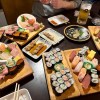Consumers are always hoping to get more than they paid for products and services, but in reality, the reverse is just as common. We’ve all been suckered in by a wily shopkeeper at one point or another, but what knowledge and preparation can we arm ourselves with to avoid being taken advantage of?
There are a bounty of goods and services available to us, all of which are marketed with beguiling strategies. Some of them will be such good values our hearts will delight in our own cleverness, while others will simply satisfy with their averageness. Of course, the remaining products, for all their appeal, will be deeply disappointing. Maybe billionaires can just spend for the joy of spending without worrying if something is really a good value, but for common people like you and me, making a poor decision can impact our wallets and our self-esteem for a long time to come.
In the hope of protecting their readers from it, Japanese weekly magazine SPA! has set out to discover what exactly is behind this buyer’s remorse in all its complex forms.
The Disappointment Ranking
First, SPA! surveyed their readers to find out what products they had felt most disappointed by. The top five might surprise you:
5. Housewares bought online
4. Food/Drinks at a restaurant
3. Food/Drinks bought online
2. Travel products or services
1. RAMEN!
Number one was a big surprise. At about 600-900 yen, the cost is negligible, and yet the expectation of deliciousness must be so high, a disappointing bowl of ramen comes as a severe disappointment.
As one serious ramen fan put it, “These days, pretty much all ramen is delicious, but you still occasionally come across a shop where neither the soup nor the noodles have anything to recommend them, and it’s just so depressing… You beat yourself up for making such a stupid choice.”
Next on the list is travel. This one is not terribly surprising, considering you are spending not only money, but time and effort.
A 36-year-old male described this disappointing experience, “I booked a package tour to Europe online. The hotels in Eastern Europe weren’t anything like the pictures. They looked like run-down haunted houses! There was no hot water, the electricity was patchy, of course the room didn’t look like the photo either, and the sheets smelled. The woman I was traveling with said with a grimace, ‘Your itinerary sucks.’ Hey, this wasn’t my damn fault!!”
If you were backpacking around as a poor student, you might just laugh at a situation like that, but as an adult traveling with someone important, you can understand the rage a disappointment like that would engender. Similarly, with number 4, imagine you are on a date with a woman you are interested in and despite all your efforts to find a nice restaurant to take her to, you end up as some dump. There’s nothing you can do about that kind of disappointment.
Online shopping makes an appearance in both number 3 and 5, emphasizing the risky nature of that approach. Some important points might be lost among the endless product description and you order an item expecting one thing, but discover another when it actually arrives.
The magazine also asked online shoppers what sources of information they used before making a purchase. Of the 53 people who responded, this was the breakdown:
Images of the product 24%
Description 22%
Reviews 22%
Word of mouth 19%
Other 13%
Avoiding Bad Ramen and Other Disappointments
Even if you aren’t just wondering in off the street, but have checked reviews and word of mouth, you might still end up at a restaurant with bad food, something that is immeasurably frustrating. But might there be some tell-tale signs you could spot between the time you enter the shop and when you sit down and get your food? SPA! asked Kiyoshi Nishino (not his real name), a self-styled food consultant who sampled 600 bowls of ramen over one year in shops from Hokkaido in the north to Kagoshima in the south.
“One of the signs of a bad ramen shop is that they have all three kinds of broth: soy sauce, miso and salt. The chances of a shop like that being bad are high,” he says. “It makes a difference if a place really specializes in one of them. Another sign, for tonkotsu ramen places, is the smell. A good tonkotsu shop shouldn’t smell. They’re confusing a smell with a nice aroma. Perhaps they are trying to lure customers in the same way a yakitori shop uses smoke from the grill, but it doesn’t work. It’s just a nuisance. And I’ve never found good ramen at a shop that didn’t have a sense of cleanliness, especially in the front where it can get sticky with grease.”
According to Nishino, these same guidelines should work for other types of restaurants and even other shops.
“When you go to the countryside, you often see a shop advertising sushi, udon and tempura. You don’t even know what kind of restaurant it’s supposed to be, and if they try to specialize in all of them, the menu would be endless. If you tried all of them at once, there’s no way they could all be good. Recently, you also see these ramen-by-day, bar-by-night type places. I’m sure the number of places that can do both well are quite small. If you can’t tell at a glance what kind of shop it is, beware!”
SPA! also asked its readers what qualities make them avoid a restaurant. Some of the answers were having clippings about the restaurant pasted on the walls and writing overly detailed descriptions of the ingredients, but Nishino says that could be misleading.
“Having clippings up or giving a lot of information about the ingredients, that could be a sign of quality. Actually, in the case of ramen books, there are some rankings that are really quite dependable, depending on who wrote it and what kind of shops they went to. If they say the ingredients are good, then the ramen will probably be tasty, so it’s not a problem if the shop posts it. However, beware of shops that put stuff like that, anything other than pictures of the food, in the front window. That means they don’t have confidence in their food and are not clearly communicating to customers what kind of restaurant they are.
He also warns against shops where the owner doesn’t seem to have any ambition.
In case you were wondering, here are the rankings for the reasons to avoid a restaurant:
1. It’s dirty.
“Restaurants where you don’t even want to touch the table are the worst!” -female, 24
2. The menu is overly descriptive.
“I’ll know if it’s good when I eat it. Enough with the self-flattery.” -male, 37
3. They have clippings hanging all over the walls.
“Just because you were covered in the press, doesn’t mean you’re good. Uncool!” -female, 29
4. It’s not clear what kind of restaurant it is.
“Japanese? Original French? If you can’t tell, it’s a non-starter.” -male, 35
5. The staff aren’t upbeat.
“If the staff aren’t upbeat, that brings me down too.” -female, 30
6. Restaurants featured in free papers.
“Is it my imagination or does that make them seem cheap?” -male, 41
7. Posts clippings of random top-10 rankings.
“What ranking is that? I don’t even know how they are judging!” -female, 29
8. Stores that pressure you to follow them on Facebook or Twitter.
“I just say I don’t have an account and run away.” -male, 33
9. Restaurants that advertise private rooms or nooks.
“A private room is supposed to be quiet, but actually people tend to be noisier and the whole place ends up being noisy.” -female, 34
10. Restaurants that push all-you-can-drink offers.
“If I’m paying for it, I want to properly enjoy a proper drink.” -female, 37
Read between the lines
This time for advice on avoiding disappointing restaurants, we turn to Keiko Yamamoto (not her real name), who says that her hobby is eating out. According to Yamamoto, reading between the lines on review sites like Tabelog can help you avoid disappointment.
“For places that have high ratings, you often see comments like ‘I didn’t think it was all that great, but everyone else said it was delicious, so I was convinced.’ That’s particularly the case with high-level restaurants. Another one is ‘great atmosphere.’ If that appears in a lot of reviews, it’s probably not a good restaurant. Because the taste is the most important thing, right?”
It’s key, she says, to check the reviewer’s history.
“Reviewers that always give good ratings or that always criticize and pick things apart can’t be trusted. Also, people who write reviews like they are penning the next great novel. What you want is a simple description of good and bad points and a menu recommendation. If you can pick out the reviewers who have written an honest and straightforward impression, then you begin to see what places are actually good. In my experience, it’s not the places that have 5 stars, but the ones that average around 3.8-4 that are the best.”
Increasingly, people are posting pictures of their food using Facebook and Twitter as well. Among this flood of information, how we separate out the beneficial information from the rest can make a big difference in how successful we are at finding a good meal.
Moving further abroad
Traveling is a big event. When that long-awaited trip turns out to be a disappointment, it can be a difficult blow. SPA! asked Daisuke Yamashita (not his real name), an agent for a major travel company, how to go about choosing a good travel agent.
“With online agencies like Rakuten or Jalan, the only method for feedback is through reviews and word of mouth. Because of this, they pay a huge amount of attention to what customers are saying. Hotels and sightseeing places also hope to increase their customers by using the online agencies, so they may prepare an especially nice room for their online customers.”
He says it’s also important to choose an agency based on the purpose of your trip.
“There was a case where a group on a family vacation was in a dormitory-style lodging and they complained about it. But if you looked at the agency they used to make the booking, it’s famous among the backpacking crowd. Choosing the wrong agency for your travel style can be hellish.”
Catchphrases like “big discount” and “big selection” often draw customers in, but what’s the secret behind these super cheap tours? SPA! asked travel journalist Chieko Chiba her opinion.
“Extremely cheap Asian tours are often offered only in the rainy season, or for three days in some country where there aren’t many places to go and the food isn’t so good,” she says.
So the selling point is just the price?
“Not all cheap tours will be a disappointment. Sometimes they have a tie-up with a local hotel or shop that brings the price down, so it’s important to check the itinerary carefully. And there’s also the chance that they’ve lowered the price to attract customers or to meet a quota of participants.”
So what’s important when it comes to choosing accommodations? SPA! turned to Nao Morita (not her real name), an employee at a venerable hotel, for her opinion, and she said not to rely on online photos.
“Try stopping by before your stay for tea or lunch. Also look at the attitude of the doorman. At a formal hotel, we are trained that a hotel staff member must act as though they are always being observed,” she said.
Hot or cold, the doorman’s job is to patiently wait for guests, so when he’s not aware of being watched, you might see his true character.
One thing that the pros do agree on is that cheap doesn’t necessarily mean bad. If you check on the reason behind the discount, you may be able to score a great deal without any disappointment.
Here are five things to remember when booking travel:
1. Watch out if the website uses over- or under-exposed photos!
2. Check what year the hotel was built and the footage of the room.
3. Ask whether any special charges will be levied if you decline to visit the duty-free shops included in the tour.
4. Look at the plan and do some preliminary investigations about the shops.
5. Be sure to check the area surrounding your hotel or lodgings. Google Earth is great for this.
Source: SPA!

 Common ramen ingredient found highly effective at clearing up radioactive contamination
Common ramen ingredient found highly effective at clearing up radioactive contamination Truck drivers love this Saitama Ramen Shop, but will it win our hearts?【Taste test】
Truck drivers love this Saitama Ramen Shop, but will it win our hearts?【Taste test】 Halal ramen comes to Tokyo with Asakusa restaurant, and it’s so good anyone will enjoy it
Halal ramen comes to Tokyo with Asakusa restaurant, and it’s so good anyone will enjoy it Have you tried Tokushima ramen? No? You should (says our obsessed Japanese-language reporter)
Have you tried Tokushima ramen? No? You should (says our obsessed Japanese-language reporter) Best breakfast ramen in southern Japan? Taste-testing Fukuoka’s super-convenient Morning Ramen
Best breakfast ramen in southern Japan? Taste-testing Fukuoka’s super-convenient Morning Ramen How to order snacks on a Shinkansen bullet train in Japan
How to order snacks on a Shinkansen bullet train in Japan Burger King Japan suddenly adds Dr. Pepper and Dr. Pepper floats to its menu nationwide
Burger King Japan suddenly adds Dr. Pepper and Dr. Pepper floats to its menu nationwide New Nintendo Lego kit is a beautiful piece of moving pixel art of Mario and Yoshi【Photos】
New Nintendo Lego kit is a beautiful piece of moving pixel art of Mario and Yoshi【Photos】 Hello, cosmetics! Clinique teams up with Hello Kitty this summer for first-time collaboration
Hello, cosmetics! Clinique teams up with Hello Kitty this summer for first-time collaboration Demon Slayer: Kimetsu no Yaiba gets new roller coaster attractions and food at Universal Studios Japan
Demon Slayer: Kimetsu no Yaiba gets new roller coaster attractions and food at Universal Studios Japan 11 different ways to say “father” in Japanese
11 different ways to say “father” in Japanese Kyoto tea merchant’s matcha parfait ice cream bars: The desserts we’ve been waiting 187 years for
Kyoto tea merchant’s matcha parfait ice cream bars: The desserts we’ve been waiting 187 years for East meets West in the Pacific-centered version of the world map
East meets West in the Pacific-centered version of the world map What do you eat when you catch a cold? We asked 11 of our Japanese reporters
What do you eat when you catch a cold? We asked 11 of our Japanese reporters Shinjuku izakaya’s all-you-can-eat-and-drink plan is one of Tokyo’s best secret cheap eats
Shinjuku izakaya’s all-you-can-eat-and-drink plan is one of Tokyo’s best secret cheap eats Nintendo history you can feel – Super NES, N64, and GameCube controllers become capsule toys
Nintendo history you can feel – Super NES, N64, and GameCube controllers become capsule toys “The most Delicious Cup Noodle in history” – Japan’s French Cup Noodle wins our heart【Taste test】
“The most Delicious Cup Noodle in history” – Japan’s French Cup Noodle wins our heart【Taste test】 Starbucks releases a cute Frappuccino and Unicorn Cake…but not in Japan
Starbucks releases a cute Frappuccino and Unicorn Cake…but not in Japan Kyoto Tower mascot termination reveals dark side behind cute Japanese characters
Kyoto Tower mascot termination reveals dark side behind cute Japanese characters McDonald’s Japan’s Soft Twist Tower: A phantom ice cream only sold at select branches
McDonald’s Japan’s Soft Twist Tower: A phantom ice cream only sold at select branches Yabai Ramen: What makes this Japanese ramen so dangerous?
Yabai Ramen: What makes this Japanese ramen so dangerous? Finally! Nintendo Japan expands Switch 8-bit controller sales to everybody, Online member or not
Finally! Nintendo Japan expands Switch 8-bit controller sales to everybody, Online member or not Japanese government wants to build luxury resorts in all national parks for foreign tourists
Japanese government wants to build luxury resorts in all national parks for foreign tourists To combat declining birth rate, Japan to begin offering “Breeding Visas” to foreigners
To combat declining birth rate, Japan to begin offering “Breeding Visas” to foreigners 10 things you should buy at 7-Eleven in Japan
10 things you should buy at 7-Eleven in Japan Studio Ghibli releases anime heroine cosplay dresses that are super comfy to wear
Studio Ghibli releases anime heroine cosplay dresses that are super comfy to wear Woman charged for driving suitcase without a license in Osaka
Woman charged for driving suitcase without a license in Osaka Studio Ghibli unveils My Neighbour Totoro miniature house model
Studio Ghibli unveils My Neighbour Totoro miniature house model Kyoto experiencing problems with foreign tourists not paying for bus fares, but not on purpose
Kyoto experiencing problems with foreign tourists not paying for bus fares, but not on purpose Fighting mild hunger with a Japanese soda that turns into jelly in the stomach【Taste test】
Fighting mild hunger with a Japanese soda that turns into jelly in the stomach【Taste test】 Studio Ghibli’s Howl’s Moving Castle tapestry unveiled in Japan for first time
Studio Ghibli’s Howl’s Moving Castle tapestry unveiled in Japan for first time McDonald’s new Happy Meals offer up cute and practical Sanrio lifestyle goods
McDonald’s new Happy Meals offer up cute and practical Sanrio lifestyle goods Sales of Japan’s most convenient train ticket/shopping payment cards suspended indefinitely
Sales of Japan’s most convenient train ticket/shopping payment cards suspended indefinitely Sold-out Studio Ghibli desktop humidifiers are back so Totoro can help you through the dry season
Sold-out Studio Ghibli desktop humidifiers are back so Totoro can help you through the dry season Japanese government to make first change to romanization spelling rules since the 1950s
Japanese government to make first change to romanization spelling rules since the 1950s Foreigner’s request for help in Tokyo makes us sad for the state of society
Foreigner’s request for help in Tokyo makes us sad for the state of society Ghibli founders Toshio Suzuki and Hayao Miyazaki contribute to Japanese whisky Totoro label design
Ghibli founders Toshio Suzuki and Hayao Miyazaki contribute to Japanese whisky Totoro label design Doraemon found buried at sea as scene from 1993 anime becomes real life【Photos】
Doraemon found buried at sea as scene from 1993 anime becomes real life【Photos】 Tokyo’s most famous Starbucks is closed
Tokyo’s most famous Starbucks is closed Princesses, fruits, and blacksmiths: Study reveals the 30 most unusual family names in Japan
Princesses, fruits, and blacksmiths: Study reveals the 30 most unusual family names in Japan Moving to Tokyo? Here are the three best, most reasonable neighborhoods to live in
Moving to Tokyo? Here are the three best, most reasonable neighborhoods to live in We found a popular Japanese ramen chain in South Korea!…or so we thought
We found a popular Japanese ramen chain in South Korea!…or so we thought The twin joys and dual sadnesses of eating ramen in the U.S.
The twin joys and dual sadnesses of eating ramen in the U.S. Instant vs. Restaurant Ramen Project: Ippudo spicy miso tonkotsu battle【Taste test】
Instant vs. Restaurant Ramen Project: Ippudo spicy miso tonkotsu battle【Taste test】 Is Japan’s highest-ranking unagi restaurant worth the six-month wait for a table? We find out
Is Japan’s highest-ranking unagi restaurant worth the six-month wait for a table? We find out Japan Ninja Council produces first-ever official hotel room in Tokyo’s Ueno
Japan Ninja Council produces first-ever official hotel room in Tokyo’s Ueno Build-it-yourself takeout ramen kits are our new favorite noodle lunch in Tokyo
Build-it-yourself takeout ramen kits are our new favorite noodle lunch in Tokyo Is ramen pizza just crazy enough to work? Japanese restaurant’s unusual menu lets us find out
Is ramen pizza just crazy enough to work? Japanese restaurant’s unusual menu lets us find out The biggest “natural” hot spring spa in Tokyo is being built now, but what is its “secret?”
The biggest “natural” hot spring spa in Tokyo is being built now, but what is its “secret?” Japan’s cheapest hotel charges just 130 yen (US$1.20) for a room, with a huge, no-privacy catch
Japan’s cheapest hotel charges just 130 yen (US$1.20) for a room, with a huge, no-privacy catch Foreign student’s comment leads to Japan’s favorite tonkotsu ramen being added to school lunch menu
Foreign student’s comment leads to Japan’s favorite tonkotsu ramen being added to school lunch menu Japan’s top 10 hotel breakfasts 2016: Kobe hotel tops the list once again!
Japan’s top 10 hotel breakfasts 2016: Kobe hotel tops the list once again! The ugly truth of goukon, Japan’s group blind dates
The ugly truth of goukon, Japan’s group blind dates Extreme budget travel! Can you do a good weekend trip to Taiwan with 50,000 yen (US$370)? – Part 2
Extreme budget travel! Can you do a good weekend trip to Taiwan with 50,000 yen (US$370)? – Part 2 The legality of adding free green onions to your ramen
The legality of adding free green onions to your ramen Are you game enough to eat Fire Ramen at this Japanese restaurant in Kyoto?
Are you game enough to eat Fire Ramen at this Japanese restaurant in Kyoto?
Leave a Reply